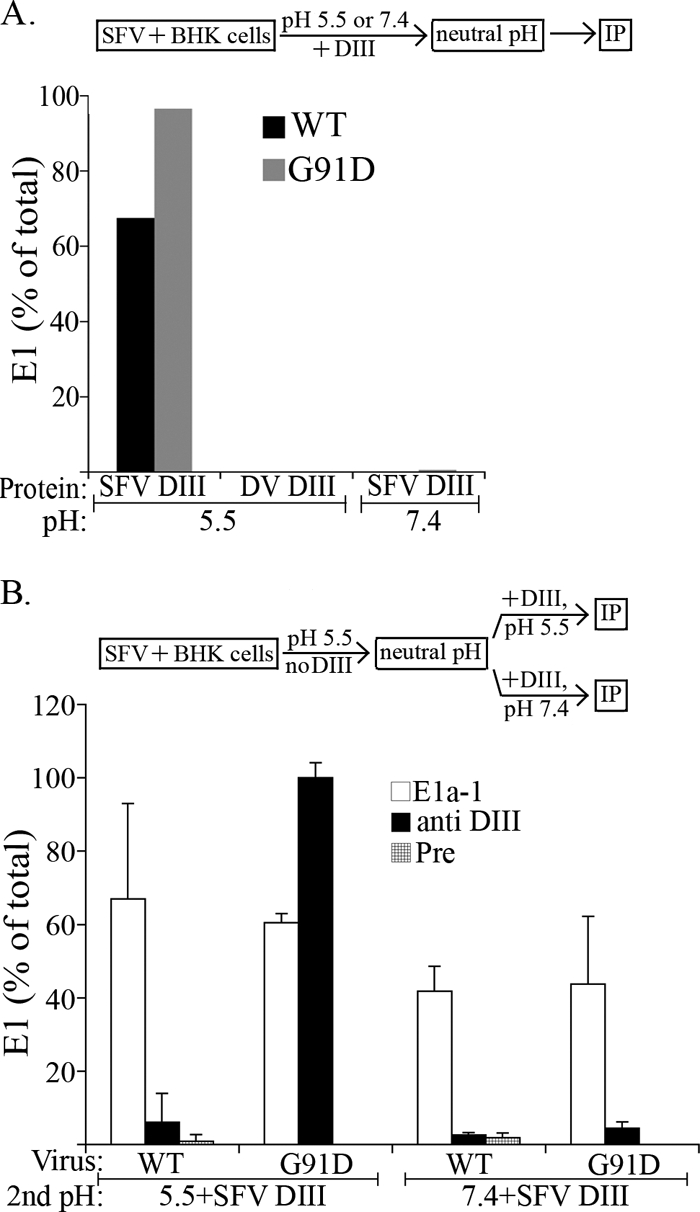Fig. 5.

Formation of the core trimer is reversible in the G91D fusion loop mutant. (A) Formation of the target of SFV DIII binding in WT and G91D SFV. BHK cells were incubated with either radiolabeled WT SFV (black bars) or the G91D mutant (gray bars) on ice for 90 min, treated at the indicated pH for 1 min at 37°C in the presence of 2 μM SFV or DV DIII, washed in neutral pH buffer, and lysed. E1 retrieval with antibody to exogenous DIII was assayed and quantitated as described for Fig. 2. Data shown are a representative example of the results of two independent experiments. IP, immunoprecipitation. (B) Reversibility of core trimer formation in the G91D mutant. BHK cells were incubated on ice with WT or mutant SFV as described for panel A, treated at pH 5.5 for 1 min at 37°C in the absence of DIII, and returned to neutral pH (see schematic). Cells were then incubated at 37°C in the presence of exogenous SFV DIII for 1 min at the indicated pH, washed in neutral pH buffer, and lysed. Parallel aliquots of the lysates were precipitated with an E1 acid conformation-specific MAb (E1a-1; white bars), an antibody that recognizes exogenous SFV DIII (anti DIII; black bars), and a control preimmune serum (Pre; crosshatched bars). The percentage of E1 retrieved with each antibody was quantitated by comparison with retrieval by polyclonal antiserum to E1/E2, as described for Fig. 2. Data shown represent the average and range of the results of 2 independent experiments.
